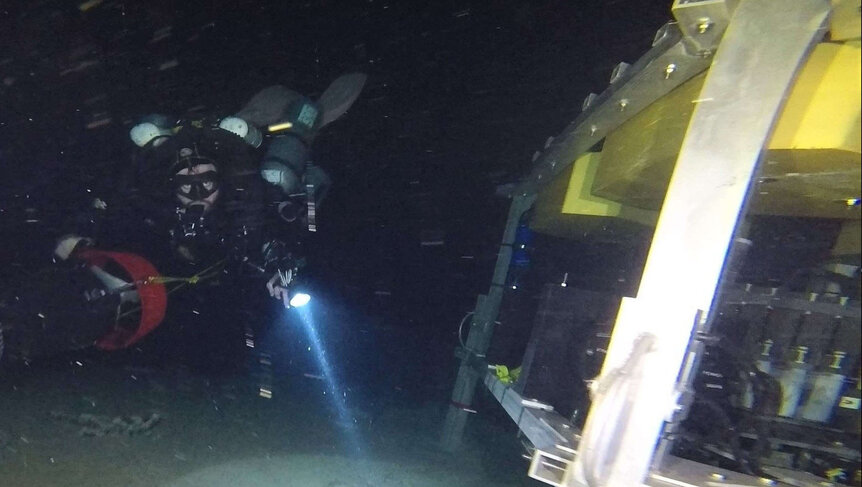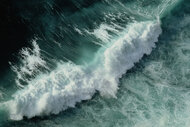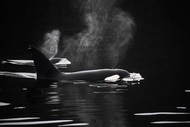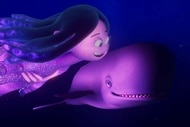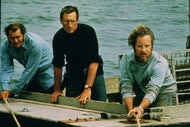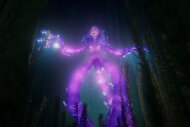Create a free profile to get unlimited access to exclusive videos, sweepstakes, and more!
Life we never knew existed could be hiding in deep-sea 'blue holes,' so scientists are diving in
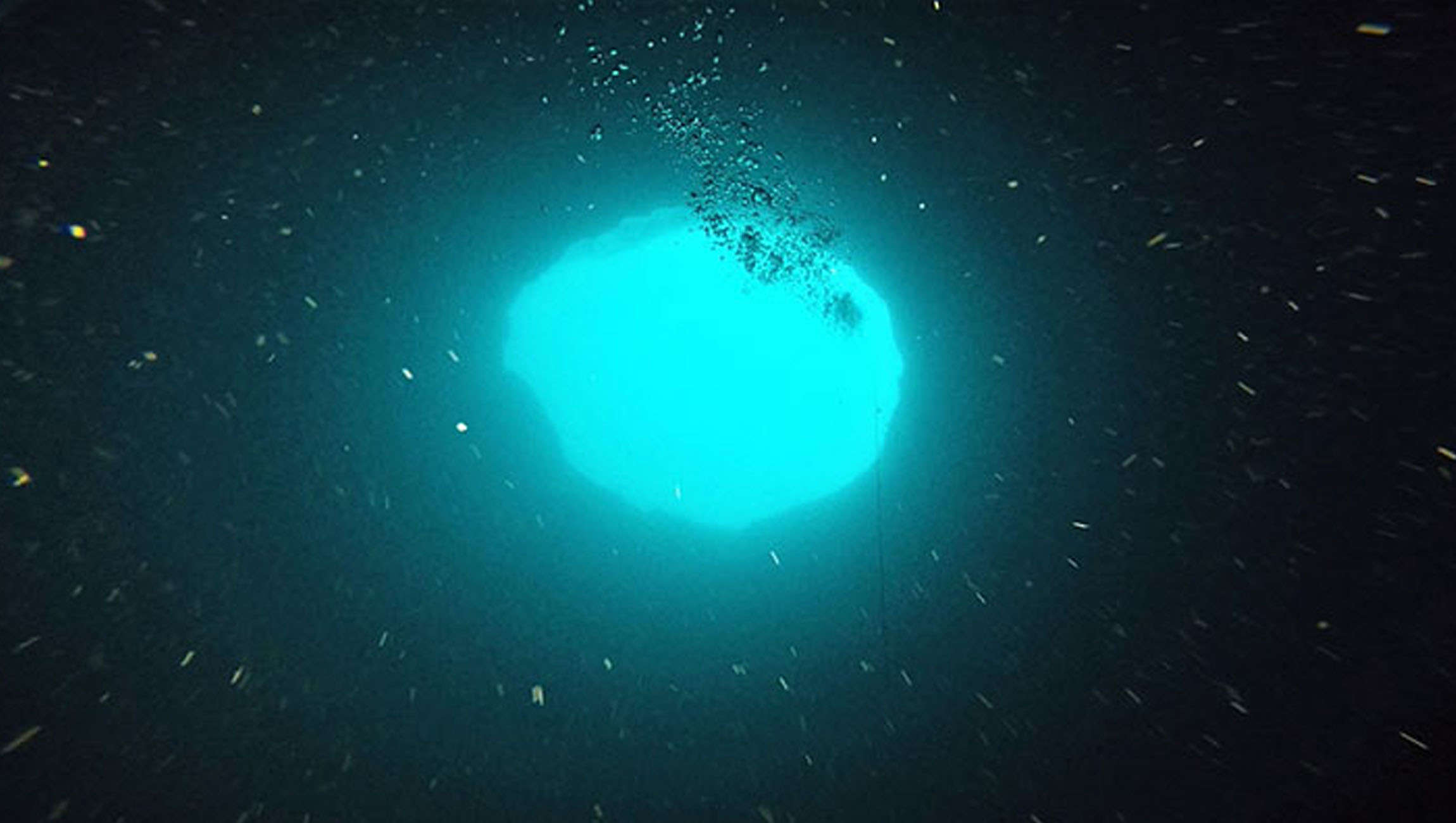
Maybe the frozen expanse of Mars, the dark side of the Moon and the icy geysers of Europa are getting serious hype right now, but to find alien worlds, you don’t have to look far beyond Earth.
We know more about the surface of the Moon and Mars than we do about the bottom of the ocean. But blue holes are deep submerged caverns that can reveal things we never knew about our own planet. Green Banana is a blue hole off the coast of Florida that has never before been explored — more is certain about some objects in space. Next month, scientists from the Mote Marine Laboratory will venture to the bottom of Green Banana in a NOAA-funded expedition.
"I'm mostly interested in the chemistry," principal investigator Emily Hall told SYFY Wire. "The last hole we looked at, Amberjack Hole, had some very unique chemical features, especially around 200 feet, which might indicate a connection to groundwater, or a biological source at that depth. Nutrients were high in Amberjack, so it would be very interesting to see if the same thing is happening at Green Banana. Also, there were high concentrations of carbon coming out of the hole, which could tell us something about our future ocean conditions (i.e., acidification, climate change). On a side note, you never know what kind of marine organisms we might see!"
Blue holes remain mysterious because of how inaccessible and perilous they are. Three divers lost their lives exploring the depths of the Great Blue Hole in Belize, which extends 406 feet below the bottom of the ocean, and Green Banana is slightly deeper at 425 feet. It will take a 150-foot dive below the surface just to reach the mouth of the sinkhole. Last year, the Mote team dove into the slightly shallower Amberjack hole (above), and eventually are looking to explore all the blue holes in Florida. Just like Amberjack, Green Banana will not fit a submersible, so scientists will deploy a benthic lander that looks like something made to crawl around Mars.
The origins of blue holes remain murky. Some believe the Florida blue holes could have formed over 10,000 years ago, when drastically lower sea levels meant that they started out as sinkholes on land. Rainwater that seeps into the ground and through a layer of limestone will dissolve the calcium carbonate in the rock over time. This groundwater is thought to have formed cracks and crevices that expanded into an underground network of channels, tunnels, springs, and caves. Sinkholes are formed when the ceilings of such caves collapse. Stalactites were found in the Great Blue Hole, evidence of what was once a dry cave.
"The holes farther offshore are deep enough that storms and hurricanes have little effect on sediment movement, thus, these featuers were not filled with sediment. Features that were closer to the shore inevitably were filled in by shifting sand and shells on the seafloor," im Culter, manager of the Benthic Ecology Program at Mote, told SYFY WIRE.
Mote scientists are looking to explore every blue hole in Florida to find out whether they were carved out by groundwater that rained down from above or leaked from the Gulf of Mexico. According to Culter, Green Banana is the largest one known in Florida so far, but there may be deeper ones hiding in unexplored regions. Blue holes are treasure troves of nutrients that gush upwards, creating oases of life swarming with sea creatures, but most potential discoveries lurk in the darker reaches.
Visibility issues and an abrupt temperature change called a thermocline start at around 70 to 90 feet in. At 130 to 150 feet, a second thermocline brings the water to about 65 degrees Fahrenheit. Any fish or other life-forms that hang out in the 85-degree water above have vanished by now. Hydrogen sulfide takes over the water. Nebulous clouds of bacteria found at this level can tell scientists how that bacteria evolved depending on the shape of the sinkhole. Green Banana is more hourglass-shaped than Amberjack, and will probably have bacteria that diversified differently as it evolved to survive at different levels. New species may even surface.
"Early visits to this site showed elevated chlorophyll levels above the opening which indicates a water chemistry different from the surrounding waters," Culter said. "The shape of Green Banana is also different than typical sinkholes, as it is largest at the top and bottom with a narrow point near the middle at 300 ft. Because of the shape, we feel it could have been a spring at a previous time and may be a good candidate site for a potential aquifer connection. At the narrow point, we found there is more temperature fluctuation than we would expect if the system were static with no flow. So we know water is moving in this system but we do not know the net direction of flow of the volume of flow."
There is no predicting what might be lying on the silt at the bottom of a blue hole. A graveyard of conch shells was found in the Great Blue Hole, where unfortunate creatures probably fell into the shadows full of hydrogen sulfide and were unable to survive. Things either fall to their doom or drift to the ocean floor after they die, providing food for bacteria and other decomposers, and perpetuating the cycle of life under the sea.
"On our last expedition was to Amberjack Hole, we saw two [endangered] smalltooth sawfish at the bottom of the hole. Unique indeed," Hall said. "We typically see sea turtles, schools of fish, sponges, corals, bivalves, crabs, so many things!"
So why the name Green Banana? Florida legend has it that the inspiration was a bunch of green bananas floating on the waves.
